Constellation Images
All Directories| 1 | andromeda.jpg |
 andromeda
andromeda
|
andromeda The second decan in the ecliptic arc of Pisces, Andromeda is typically pictured as a regal woman bound by shackles and chains. She represents Messiah’s promised bride who is looking to be set free by Perseus, her next-door-neighbor devil slayer. Perseus is shown with the enemy’s severed head in his hand, which prophesies the Lord’s return and banishment of the tormenter. So, remember as you struggle to keep Satan bound that someday he will be no more. Let your hope in this promise motivate you to resist him. |
| 2 | aquarius.jpg |
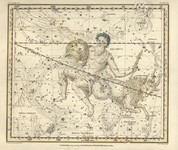 aquarius
aquarius
|
aquarius Aquarius (the water urn) - He is the one pouring out the blessings on the redeemed.
The Blessings Ensured Aquarius, the water bearer with the poured-out urn often pictured at belly level, could be indicative of the coming of the Holy Spirit. Jesus referenced this when He said, “out of your belly shall flow rivers of living water.” This constellation indicates great spiritual ability—an affinity for the energizing of the Holy Spirit. The second decan in the ecliptic arc of Pisces, Andromeda is typically pictured as a regal woman bound by shackles and chains. She represents Messiah’s promised bride who is looking to be set free by Perseus, her next-door-neighbor devil slayer. Perseus is shown with the enemy’s severed head in his hand, which prophesies the Lord’s return and banishment of the tormenter. So, remember as you struggle to keep Satan bound that someday he will be no more. Let your hope in this promise motivate you to resist him. |
| 3 | aquila.jpg |
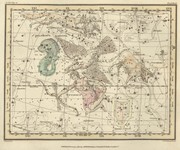 aquila
aquila
|
aquila Capricorn’s first and second decans—Sagitta and Aquila—are located in the first and second one-third portions of Capricorn’s ecliptic arc. Their combined Christological meaning is of a willing sacrifice. In ancient zodiacs, Sagitta, the arrow, is pictured as piercing Aquila, the eagle. The communication of this action shows a willing sacrifice, displaying the highest form of love—that of laying down your life for others. In more modern zodiacs, Sagitta, the arrow, appears to fly straight at Aquila as he falls from the sky with his head pointed downward toward the ecliptic path. This indicates that the eagle has already been pierced and is dying (even though the arrow is not touching him as pictured in the ancient zodiacs). The arrow is the implement and the eagle is the target. The star names in both of these constellations confirm that a willing sacrifice has been made. |
| 4 | aries.jpg |
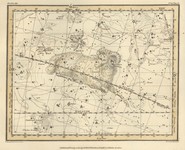 aries
aries
|
aries Aries (the ram) - He is the Ram of God, redeeming through His sacrificial blood, which was shed as the Passover Lamb.
Their Blessings Consummated and Enjoyed Aries is the ram of God—not one dying in sacrifice but one full of vigor—representing the coming King after His sacrifice. It is indicative of a kingdom-taking trait, with the three decans in this grouping showing an attitude of fighting for others and a sacrificial type of leadership, rather than one who leads from the front. An Aries, although not always the one in charge, leads with love and encouragement. Capricorn’s first and second decans—Sagitta and Aquila—are located in the first and second one-third portions of Capricorn’s ecliptic arc. Their combined Christological meaning is of a willing sacrifice. In ancient zodiacs, Sagitta, the arrow, is pictured as piercing Aquila, the eagle. The communication of this action shows a willing sacrifice, displaying the highest form of love—that of laying down your life for others. In more modern zodiacs, Sagitta, the arrow, appears to fly straight at Aquila as he falls from the sky with his head pointed downward toward the ecliptic path. This indicates that the eagle has already been pierced and is dying (even though the arrow is not touching him as pictured in the ancient zodiacs). The arrow is the implement and the eagle is the target. The star names in both of these constellations confirm that a willing sacrifice has been made. |
| 5 | auriga.jpg |
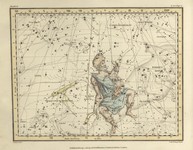 auriga
auriga
|
auriga Auriga is the warring shepherd as shown by the figure of a shepherd holding a sheep and fighting off the enemy. King David comes to mind as this type; he killed a lion and a bear while protecting the flock. This shows the Messianic quality of fighting for people and not giving up on them. It is not a shepherd who negotiates for the sheep; he rescues them by force. Having this configuration in the heavens is rare. Capricorn’s first and second decans—Sagitta and Aquila—are located in the first and second one-third portions of Capricorn’s ecliptic arc. Their combined Christological meaning is of a willing sacrifice. In ancient zodiacs, Sagitta, the arrow, is pictured as piercing Aquila, the eagle. The communication of this action shows a willing sacrifice, displaying the highest form of love—that of laying down your life for others. In more modern zodiacs, Sagitta, the arrow, appears to fly straight at Aquila as he falls from the sky with his head pointed downward toward the ecliptic path. This indicates that the eagle has already been pierced and is dying (even though the arrow is not touching him as pictured in the ancient zodiacs). The arrow is the implement and the eagle is the target. The star names in both of these constellations confirm that a willing sacrifice has been made. |
| 6 | bootes.jpg |
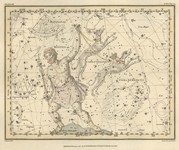 bootes
bootes
|
bootes Virgo’s third decan, which occupies the last one-third portion of the arc, is the famed constellation of Bootes (aligned with Virgo’s legs and feet area). Bootes is pictured as a running man holding a shepherd’s rod in one hand and a sickle in the other. The shepherd’s rod and the sickle speak prophetically of Messiah’s two comings.
Sometimes known as the celestial shepherd coming out of the Big and Little Dippers (sheepfolds), Bootes is also known as the Grim Reaper who is coming with judgment. Bootes’ chief star is Arcturus, one of the brightest stars in the northern hemisphere. Over the course of a single night, its appearance can change from bluish green to yellowish orange-red. This star is almost universally known as “the coming One” or “He comes.” |
| 7 | cancer.jpg |
 cancer
cancer
|
cancer Cancer (the crab) - He is shown as the One holding onto the inheritance of the redeemed.
Messiah’s Redeemed Possessions Cancer the crab symbolically shows tenacity to hold on to the faith. This constellation is also symbolized as a sheepfold, which shows Jesus as the Shepherd—the door of the sheep. This indicates a great love for others and a strong pastoral heart of service. This can also show a great heart for pressing into the kingdom of God (Philippians 3:14)—a tenacious pursuer. Virgo’s third decan, which occupies the last one-third portion of the arc, is the famed constellation of Bootes (aligned with Virgo’s legs and feet area). Bootes is pictured as a running man holding a shepherd’s rod in one hand and a sickle in the other. The shepherd’s rod and the sickle speak prophetically of Messiah’s two comings.
Sometimes known as the celestial shepherd coming out of the Big and Little Dippers (sheepfolds), Bootes is also known as the Grim Reaper who is coming with judgment. Bootes’ chief star is Arcturus, one of the brightest stars in the northern hemisphere. Over the course of a single night, its appearance can change from bluish green to yellowish orange-red. This star is almost universally known as “the coming One” or “He comes.” |
| 8 | canis major.jpg |
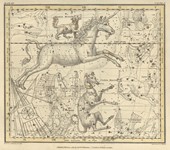 canis major
canis major
|
canis major Canis Major is located within the second third of Gemini’s ecliptic arc, lining up with Castor, the judge or ruler. (When this is put together with the third portion, which lines up with Pollux the rescuer, it shows the unified traits of Messiah as ruler, judge, and rescuer.) One of the brightest stars in the heavens, Sirius, is located in Canis Major; and its meaning, “the prince comes,” testifies of the coming Messiah. Sirius is so bright that this decan probably should have been named after it. Canis Major’s other star names show the virtues of a just ruler, a coming prince, and a king. Canis Major lines up with the upper midsection of Gemini’s two bodies; and, if your birth sky has a celestial body in this area, it shows that you can either lean to the left, as the rescuer, or to the right, as the prince. Like King Arthur, you can be both noble conqueror and just ruler. |
| 9 | cetus.jpg |
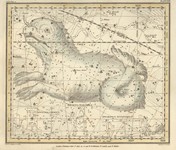 cetus
cetus
|
cetus Cetus is the sea monster bound by the two fishes. Without question this is Leviathan, the sea monster and the king of pride. Isaiah 27 and Job 41 put this in a cinch. There is even a mention of a double bridle in Job 41:13. Cetus is the sea monster bound. This shows the need to be vigilant in warfare; Satan will try to come back at you. Be especially careful of pride. Canis Major is located within the second third of Gemini’s ecliptic arc, lining up with Castor, the judge or ruler. (When this is put together with the third portion, which lines up with Pollux the rescuer, it shows the unified traits of Messiah as ruler, judge, and rescuer.) One of the brightest stars in the heavens, Sirius, is located in Canis Major; and its meaning, “the prince comes,” testifies of the coming Messiah. Sirius is so bright that this decan probably should have been named after it. Canis Major’s other star names show the virtues of a just ruler, a coming prince, and a king. Canis Major lines up with the upper midsection of Gemini’s two bodies; and, if your birth sky has a celestial body in this area, it shows that you can either lean to the left, as the rescuer, or to the right, as the prince. Like King Arthur, you can be both noble conqueror and just ruler. |
| 10 | corvus.jpg |
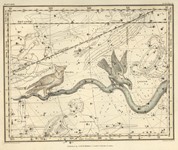 corvus
corvus
|
corvus Leo’s third decan is Corvus, the avenging raven. What is typically pictured as a raven should probably be depicted as a vulture, since it is feasting upon the carcass of Hydra, the accursed serpent. This is symbolic of the ultimate retribution that is prophesied in numerous biblical accounts—in both the Old and New Testaments—of judgment on wickedness, including those who commit it. Vultures will eat anything, but they prefer a decaying carcass, often doing ritualistic dances around it, as if to defy the creature even after death. Although the Bible calls them eagles, there is a distinction between eagles and vultures—and in this case, they are vultures. This constellation portrays death, reprisal, and insult—seen biblically in David’s prophecy to Goliath that he would chop off his head and feed the carcasses of the Philistine army to the birds. This is similar to the promised doom of the mighty sons of evil (Belial), as prophesied in the book of Revelation (and Enoch 1). Corvus shows a hatred of evil and an ultimate reprisal and vindication against it. This is victory with insult thrown on top, especially after total decimation and destruction. The Scriptures speak of wicked men who will be eaten and desecrated, where they are often called children of the devil or sons or daughters of Belial. Corvus, the avenging vulture, shows the fate promised to them all the way from the apocryphal book of Enoch chapter 1 to the last book in the Bible, Revelation. The biblical book of Jude echoes the same theme: the bad guys will not get away with it; they will pay in the end! There is a function within spiritual warfare to battle these wicked people and pronounce judgment on them. Elijah did this, and so did Jehu and John the Baptist. Certainly Jesus of Nazareth, along with Stephen from Acts, and a host of other prophets (in both the Old and New Testaments) come to mind as well. The commonality is a love for the Lord and His kingdom and the corresponding hatred for His enemy and the evil kingdom, along with a determination to pay whatever price is necessary for the victory. The willingness to suffer martyrdom will not be an uncommon trait in these fearless warriors, if the meaning of Corvus is understood and lived out. This messianic virtue should not be stifled. Leo is the last ecliptic constellation, and Corvus is Leo’s last decan. Corvus could be the most ferocious of all the celestial warriors, in that the others, such as Hercules, Perseus, and Orion, are merely holding the heads of the enemy—but Corvus is actually eating the enemy’s flesh! Corvus shows a faithfulness to vindicate evil upon those who have practiced evil. |
| 11 | cygnus.jpg |
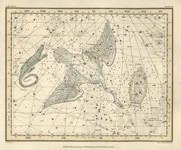 cygnus
cygnus
|
cygnus Aquarius’ third decan is Cygnus, a significant constellation in the northern circle of the heavens. It is traditionally pictured as a swan, but this is because it has been tainted by astrology. It’s true that “cygnus” is the Latin word for “swan,” which is considered to be the king of water birds; but the reason it was named this is because of its location in the stream of the Milky Way, which was mythologically called a river due to its whitish blur across the sky. One of Cygnus’ star names means “quickly flying” and another means “to descend in a circle;” and when this is Christologically interpreted, it is a representation of the descending Holy Spirit dove. As the dove that descended upon Yeshua of Nazareth at the time of His water baptism, Cygnus is a beautiful depiction of the baptism and power of the Holy Spirit. Since Cygnus’ relative position is in the latter portion of Aquarius, it also shows the outpouring of blessings—one of the greatest being the gift of the Holy Spirit. The overall Christological message of Aquarius is the coming of the Holy Spirit and His power. |
| 12 | gemini.jpg |
 gemini
gemini
|
gemini Gemini (the twins) - He is the triumphant Redeemer coming twice, once as a sacrifice and next as the King.
Messiah’s Reign as Prince of Peace Gemini is represented symbolically by twins, one being a worshipper and the other a warrior. It reveals the image of Yeshua in a balanced life, not being too extreme but practical in judgment and judicious in decision making. It may also indicate a struggle for the spiritual mind to dominate over the carnal mind. Castor and Pollux, the principal stars of Gemini, are in the heads of the twins. The one higher above the ecliptic is Castor, which means the ruler or king. The lower star, Pollux, means the sufferer. Locations of planets in proximity to these show inclinations toward that persuasion. This also shows balance between being redeemer-minded and kingly-minded. Aquarius’ third decan is Cygnus, a significant constellation in the northern circle of the heavens. It is traditionally pictured as a swan, but this is because it has been tainted by astrology. It’s true that “cygnus” is the Latin word for “swan,” which is considered to be the king of water birds; but the reason it was named this is because of its location in the stream of the Milky Way, which was mythologically called a river due to its whitish blur across the sky. One of Cygnus’ star names means “quickly flying” and another means “to descend in a circle;” and when this is Christologically interpreted, it is a representation of the descending Holy Spirit dove. As the dove that descended upon Yeshua of Nazareth at the time of His water baptism, Cygnus is a beautiful depiction of the baptism and power of the Holy Spirit. Since Cygnus’ relative position is in the latter portion of Aquarius, it also shows the outpouring of blessings—one of the greatest being the gift of the Holy Spirit. The overall Christological message of Aquarius is the coming of the Holy Spirit and His power. |
| 13 | hercules.jpg |
 hercules
hercules
|
hercules Scorpio’s third and final decan (in Scorpio’s third ecliptic segment) is Hercules, the wounded warrior. Even though Hercules is wounded, he is clubbing a serpent-like creature, making him both “the one who is wounded and the one who also wounds” (reflecting the name of his principal star Ras al Gethi, aka Rasalgethi, “the head of him who bruises,” which is similar to the meaning of Ophiuchus’ principal star). Apparently, Hercules gave more than he got and was willing to be wounded in order to rescue others. Hercules is the inverted counterpart of Ophiuchus, with their heads side-by-side and their bodies in opposite directions. Ophiuchus is stomping a scorpion and Hercules is clubbing a serpent. They are like heavenly twin towers who are prophesying the doom of serpents, scorpions, and the kingdom of darkness. |
| 14 | hydra.jpg |
 hydra
hydra
|
hydra Leo’s first decan, Hydra, is located directly under the lion’s feet. (One of Leo’s dominant stars is Regulus, whose name means “the treading under foot,” so named because Leo’s paws are directly over Hydra’s head.) Hydra is a huge water serpent, which biblically represents Satan and his kingdom of darkness. The sea serpent’s extreme length represents the time evil has existed upon Earth, as it twists beneath the ecliptic path. The depiction of it passing through Virgo and into Libra shows the devil’s intent to first seize and kill the virgin’s baby and, if that failed, to then go after the grown redeemer (Libra). Fortunately, the complete story that was in God’s foreknowledge was written in the heavens so we can see Leo ready to pounce on the prey beneath his feet. It is evident that the lion will violently tear the serpent to pieces and devour it. |
| 15 | leo minor.jpg |
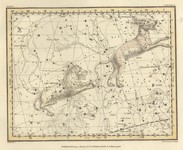 leo minor
leo minor
|
leo minor |
| 16 | leo.jpg |
 leo
leo
|
leo Leo (the lion) - He is the coming King to establish the kingdom He purchased with His own blood.
Messiah’s Consummated Triumph Leo is the lion of the tribe of Judah, which shows leadership, a strong personality, and an apostolic attitude. These are the character traits of being an out-in-front leader. They are bold and assertive. |
| 17 | ophiuchus.jpg |
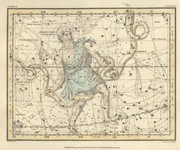 ophiuchus
ophiuchus
|
ophiuchus Ophiuchus is another constellation that the Sun intersects yearly. It is not often recognized as a separate constellation from Scorpio because of the lack of astronomy in astrology, but there are divergent meanings between these two characters. Scorpio shows conflict but Ophiuchus shows victory in the midst of struggle. The exact location of the Sun or planet in the legs of this warrior gives more detail to your spiritual warfare and victory. Ophiuchus shows a victorious warrior in a struggle. |
| 18 | orion.jpg |
 orion
orion
|
orion Orion is the victorious hunter with his club raised high. Even though this constellation is not directly on the ecliptic path that the planets usually revolve on, the club of Orion is sometimes intersected by planets. Obviously the club portrays victory over the enemy while currently at war. This shows current warfare and a need to be diligent and have the attitude of a conqueror (Psalm 18:37). |
| 19 | Pegasus.jpg |
 Pegasus
Pegasus
|
Pegasus Aquarius’ second decan, Pegasus, is located within the second portion of Aquarius’ ecliptic arc, basically encompassing his midsection. Depicted as a flying winged horse whose meaning and definition is “one who comes joyfully and quickly” (taken from its star names), Pegasus symbolizes one who is quickly and joyfully returning to where he has been before. Christologically, Pegasus represents the good news of Messiah’s return, with the overall theme of joy. |
| 20 | pisces.jpg |
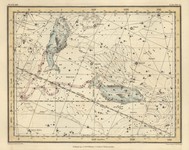 pisces
pisces
|
pisces Pisces (the fishes) - He is the Redeemer of both Jews and Gentiles, tied together by the band of His sacrifice for all.
Their Blessings in Abeyance Pisces is represented by two fishes connected by a band; one fish is pointing up (north), and the other is flowing horizontally with the ecliptic path of the Sun. Pisces shows abundance and usually great giftings that must be developed in order to bless and help others. It may also indicate strong evangelistic tendencies. The relationship of the band vertically indicates relationship to the Creator; the horizontal band flowing with the ecliptic shows relationship with people. Aquarius’ second decan, Pegasus, is located within the second portion of Aquarius’ ecliptic arc, basically encompassing his midsection. Depicted as a flying winged horse whose meaning and definition is “one who comes joyfully and quickly” (taken from its star names), Pegasus symbolizes one who is quickly and joyfully returning to where he has been before. Christologically, Pegasus represents the good news of Messiah’s return, with the overall theme of joy. |
| 21 | sagittarius.jpg |
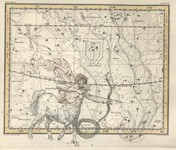 sagittarius
sagittarius
|
sagittarius Sagittarius (the archer) - He is the victorious King returning after being wounded.
Redeemer’s Triumph Sagittarius, the archer on the white horse, reveals a winning attitude, despite circumstances. It is indicative of warrior-like, kingdom-taker character traits, revealing Messiah’s aggressive nature as a strong finisher in the end. Sagittarius carries an apostolic message. Aquarius’ second decan, Pegasus, is located within the second portion of Aquarius’ ecliptic arc, basically encompassing his midsection. Depicted as a flying winged horse whose meaning and definition is “one who comes joyfully and quickly” (taken from its star names), Pegasus symbolizes one who is quickly and joyfully returning to where he has been before. Christologically, Pegasus represents the good news of Messiah’s return, with the overall theme of joy. |
| 22 | scorpio.jpg |
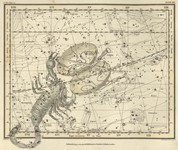 scorpio
scorpio
|
scorpio Scorpio (the scorpion) - He is the wounded Redeemer (wounded by the enemy)
Redeemer’s Conflict Scorpio is the figure of the scorpion with the conqueror’s (Ophiuchus’) foot on its heart. It is the most violent position in the ecliptic path and shows victory through conflict. This shows tenacity, a strong will to win, and being victorious after being wounded, especially since Hercules is included as a decan in this grouping of constellations. It may also reveal a strong prophetic gifting. Aquarius’ second decan, Pegasus, is located within the second portion of Aquarius’ ecliptic arc, basically encompassing his midsection. Depicted as a flying winged horse whose meaning and definition is “one who comes joyfully and quickly” (taken from its star names), Pegasus symbolizes one who is quickly and joyfully returning to where he has been before. Christologically, Pegasus represents the good news of Messiah’s return, with the overall theme of joy. |
| 23 | taurus.jpg |
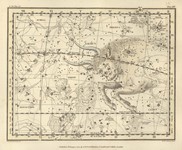 taurus
taurus
|
taurus Taurus (the bull) - He is the blood of the bull, as a profile of Old Testament offerings for redemption.
Coming Messiah Taurus is the figure of a charging bull, indicative of great determination and a strong will. This kind of determination was demonstrated Christologically by His dedication to finish the fight at Calvary. These stand strong in the Lord (Ephesians 6:10). Aquarius’ second decan, Pegasus, is located within the second portion of Aquarius’ ecliptic arc, basically encompassing his midsection. Depicted as a flying winged horse whose meaning and definition is “one who comes joyfully and quickly” (taken from its star names), Pegasus symbolizes one who is quickly and joyfully returning to where he has been before. Christologically, Pegasus represents the good news of Messiah’s return, with the overall theme of joy. |
| 24 | ursa major.jpg |
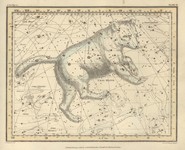 ursa major
ursa major
|
ursa major Cancer’s second decan is Ursa Major. There are two stars, Asellus Boreas, aka Asellus Borealis (northern donkey), and Asellus Australis (southern donkey) in this area of Cancer that emphasize the care of animals or, Christologically, the care of people through the provision of a pastor/shepherd. Most of us know Ursa Major as the Big Dipper—the larger dipper with the long handle (known as the bear’s tail). However, because this is a sheepfold, the long string of stars that looks like the dipper’s handle actually represents the pen’s gate. The message of Ursa Major and Ursa Minor is “many are called” (the larger sheepfold) but “few are chosen” (the smaller sheepfold). |
| 25 | ursa minor.jpg |
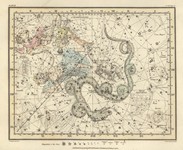 ursa minor
ursa minor
|
ursa minor Cancer’s first decan, Ursa Minor, adds more details about the corral or cattle pen because it is also a sheepfold (as is Ursa Major). The common belief is that Ursa means “bear” and Minor means “the smaller one.” Yet the star names in Ursa Minor indicate a cattle fold or sheep pen and certainly not a bear. It is puzzling that it has been called a bear, especially since bears do not have tails as long as the one in the typical picture. Perhaps the ancient star gazers missed this because it is about the hope of the messianic kingdom and they did not have a clue about that, so they replaced it with a false figure. Ursa Minor is the constellation that houses the current pole star, and this deepens the hope message because the next pole star will be in the constellation of Cepheus, the coming king. This is the prophecy of the coming ages, with the next age being the presence of the King here on Earth. That kingdom will be for the chosen, which is why this is the smaller of the two cattle folds. |
| 26 | virgo.jpg |
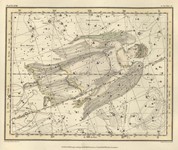 virgo
virgo
|
virgo Virgo (the virgin)—Christ is the promised Seed of the woman.
Redeemer as Promised Seed Virgo is the figure of the woman who would bring forth the Redeemer. It is the first constellation in the ecliptic path and indicates the image of Messiah as a kingdom builder and visionary. Its positioning as the first constellation also shows the character trait of initiation, often indicative of an individual who operates outside the nine dots of conformity. This person is usually looking for a better way of doing things instead of sticking with the status quo. Cancer’s first decan, Ursa Minor, adds more details about the corral or cattle pen because it is also a sheepfold (as is Ursa Major). The common belief is that Ursa means “bear” and Minor means “the smaller one.” Yet the star names in Ursa Minor indicate a cattle fold or sheep pen and certainly not a bear. It is puzzling that it has been called a bear, especially since bears do not have tails as long as the one in the typical picture. Perhaps the ancient star gazers missed this because it is about the hope of the messianic kingdom and they did not have a clue about that, so they replaced it with a false figure. Ursa Minor is the constellation that houses the current pole star, and this deepens the hope message because the next pole star will be in the constellation of Cepheus, the coming king. This is the prophecy of the coming ages, with the next age being the presence of the King here on Earth. That kingdom will be for the chosen, which is why this is the smaller of the two cattle folds. |
| 27 | zodiac.jpg |
 zodiac
zodiac
|
zodiac |

